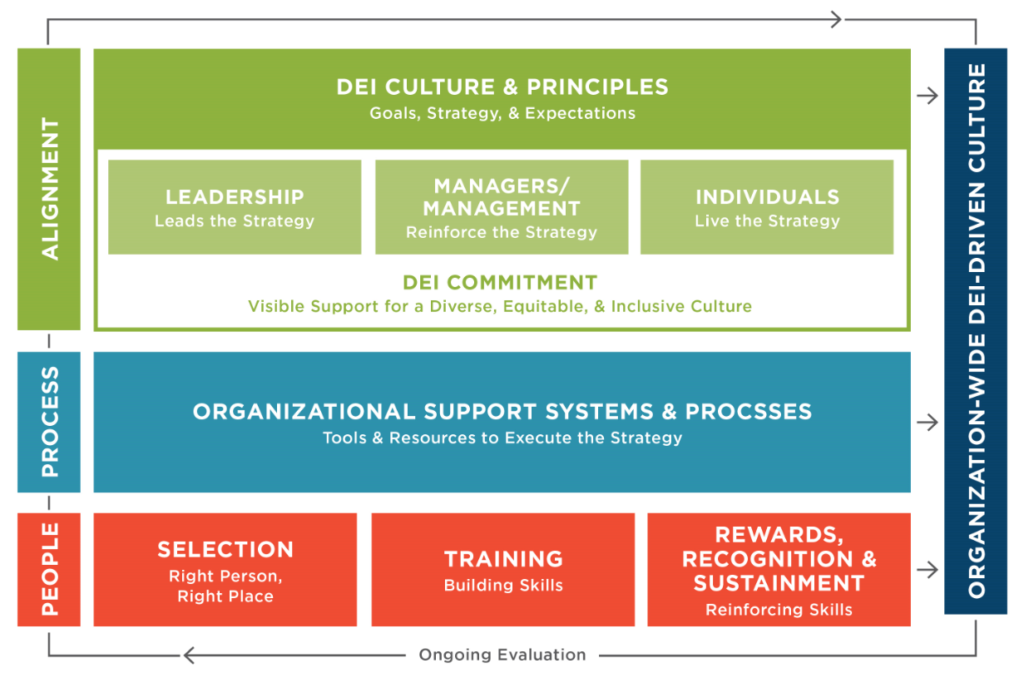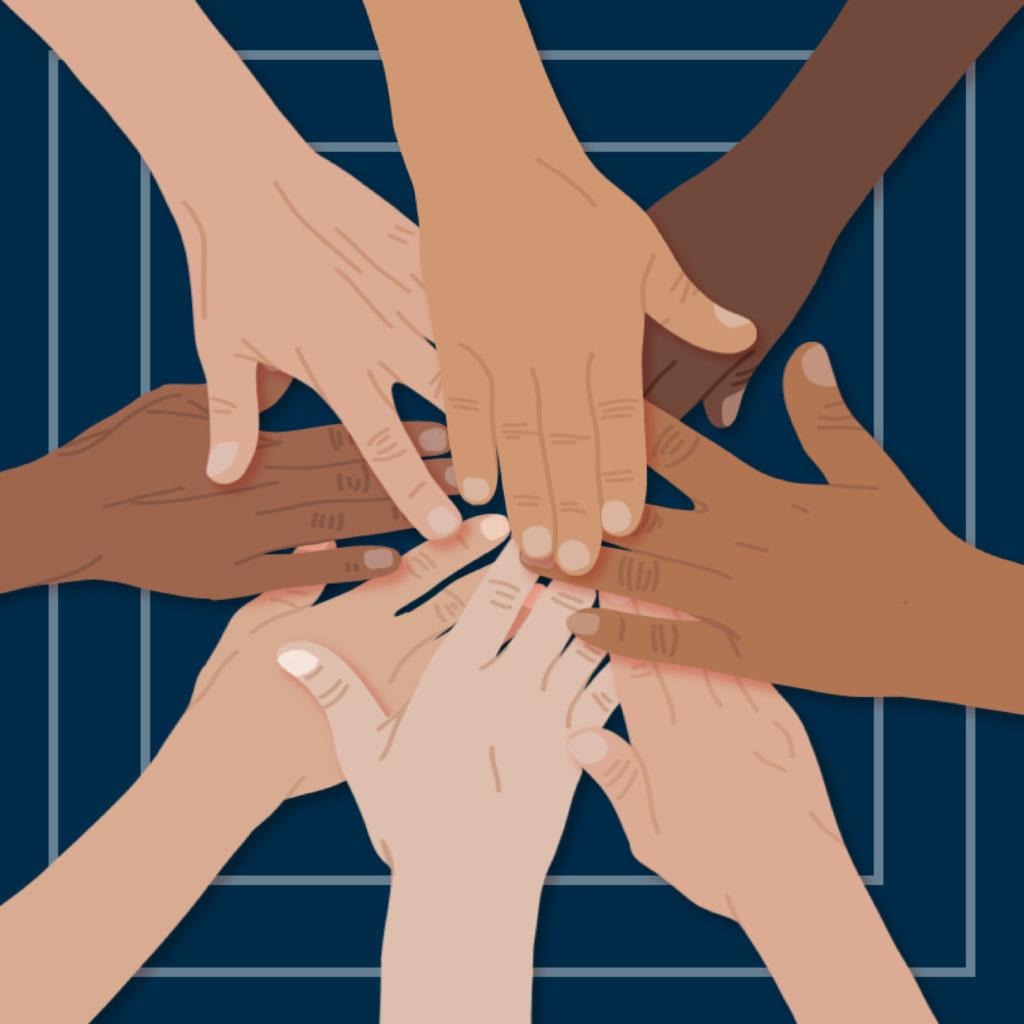In the wake of nation-wide protests for social justice and equality ignited by the deaths of George Floyd, Breonna Taylor, and Jacob Blake, organizations are quickly examining their workplace culture and policies to uncover the role they play in perpetuating inequality. Since May, many organizations have doubled-down on diversity, equity, and inclusion (DEI) efforts. Pepsi Co announced a five-year, $400 million initiative that includes increasing Black managerial representation by 30% and more than doubling business with Black-owned suppliers. Bank of America announced a $1 billion, four-year commitment to strengthen opportunities in communities of color, and PayPal is committing $530 million to support minority-owned businesses, in addition to improving its internal DEI practices.
While it’s great to point to metrics that show how an organization has increased diverse representation by a certain percentage over a designated timespan, long-term sustainable DEI efforts require a shift from just focusing on hitting diversity targets to managing cultural change. For true change to take root and withstand years of organizational transformation, such as shifting leadership, DEI efforts must transition from being the sole responsibility of a few (e.g. the HR department or a diversity executive) to the responsibility of each individual within the organization. The organizational culture must be DEI-driven.
In a DEI-driven culture, the journey is the objective, not the end result. It’s a mindset shift away from checking boxes and mandatory diversity training to a holistic and human-centered approach that encourages ownership of the culture from top to bottom and enables everyone to feel welcomed for their talents, celebrated for their diversity, and able access to the same opportunities.
In our approach to building a DEI-driven culture, we encourage organizations to start with alignment. Alignment is about understanding the unique needs of your organization and people and using that intelligence to define a clear, DEI-driven vision. With that vision, you can then determine a strategy to get from where you are to where you want to be. Alignment also takes into consideration the expectations of individuals and socializing the role they will play in bringing the vision to life.

Process involves developing the cultural programs and structures to reinforce and promote the vision, goals, and strategy identified in alignment. Culture is an organization’s unique blend of language, values, attitudes, beliefs, ways of thinking, leadership styles, symbols, and customs. This means process can touch on a vast number of areas within an organization, such as standard operating procedures, employee councils, communication forums, performance feedback processes, and recognition programs, etc. Therefore, it’s important for organizations to think of DEI as an ongoing journey. There is no way an organization can address every single challenge or opportunity at once, but over time, leaders and their teams can implement meaningful change.
Last, but definitely not least, people! In a DEI-driven culture, people at all levels of an organization are responsible for living out the values and strategy. Talent selection, training, and ongoing coaching and development play pivotal roles in people’s abilities to successfully contribute to an organization and feel engaged and invested in.
The fact that a DEI-driven culture is ongoing may seem daunting, but it shouldn’t. The beauty of the journey is there is always room to experiment, learn, and grow. And as long as DEI is less about a checkbox and more about enriching the human experience, your organization can grow stronger and richer.
Sources:
https://justcapital.com/news/notable-corporate-responses-to-the-george-floyd-protests/



